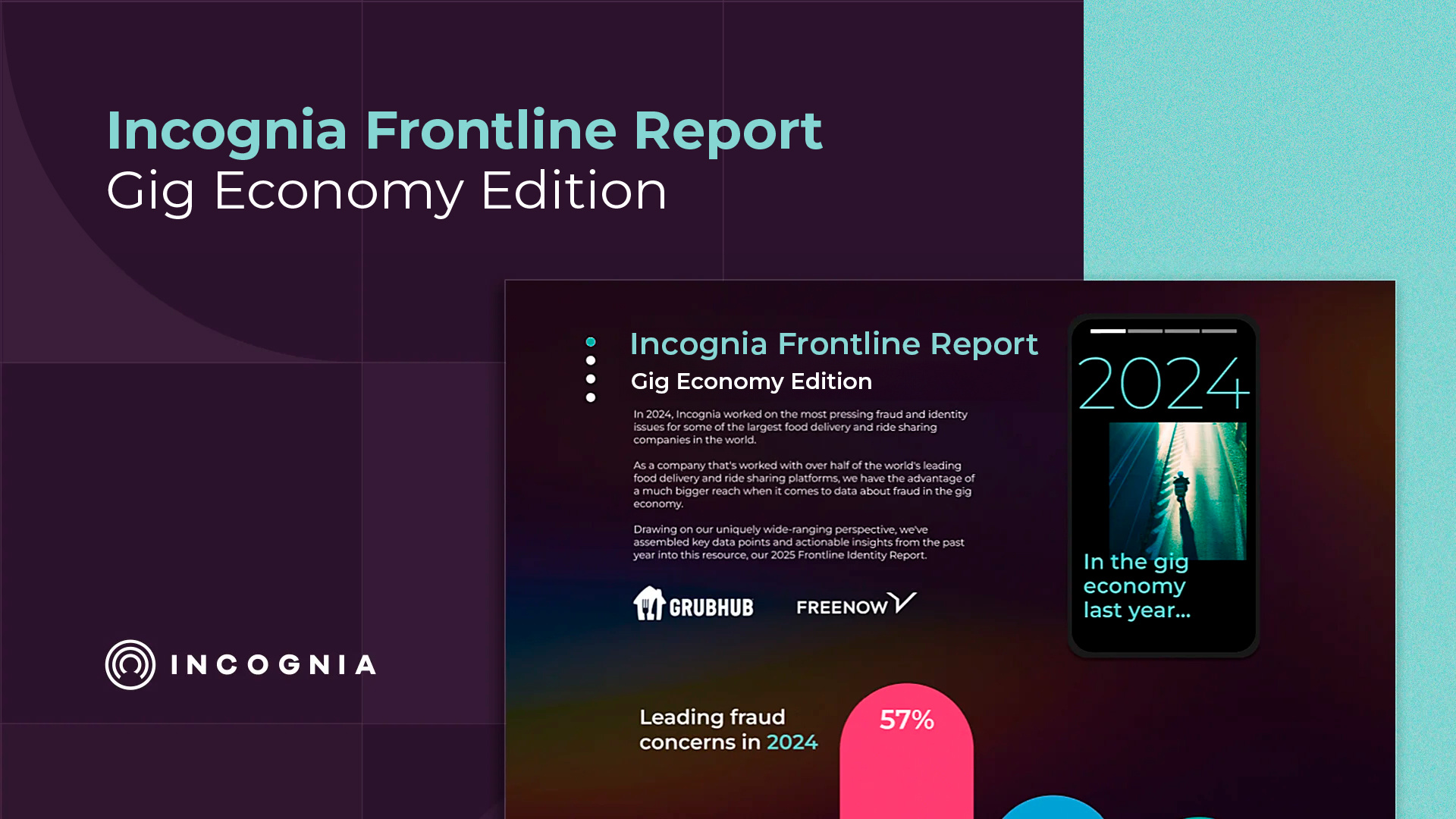- Blog
- The Hidden Costs of Internal Fraud Prevention
The Hidden Costs of Internal Fraud Prevention
Subscribe to the Incognia Newsletter
Development: Why It's Not The Optimal Path
Build vs. buy might just be the “chicken or egg” debate of the fraud detection and prevention world. The question is as old as time: should I invest in a third-party fraud prevention solution, or should I develop my own tools in-house? While every business is different, when it comes to DIYing fraud detection and prevention, the juice is rarely worth the squeeze.
The illusion of control when building your own fraud prevention
No two companies will have the exact same fraud challenges, nor the same resources at their disposal to combat them. At the same time, fraudsters are evolving their methods and technological tools constantly, meaning that new and more tailored threats emerge every day.
With unique problems, it only makes sense for companies to consider building their own unique solutions. The appeal is obvious—in a perfect world, a home-brewed fraud prevention solution would mean everything you need and nothing you don’t. The perfect fraud prevention solution for your specific needs at a fraction of the cost of a third party service. Unfortunately, we don’t live in a perfect world, and neither do any internally developed fraud prevention tools we might try to build. The path to developing a working, tamper-resistant fraud solution is full of unexpected costs, labor intensity, resource requirements, and security vulnerabilities.
While you can get the job done with enough resources and labor thrown into a custom fraud prevention project, the cost-benefit analysis of actually building and maintaining one tends to skew into the red early on.
The initial investment is just the tip of the iceberg
The initial development of a fraud prevention system is already a significant undertaking, involving considerable time and financial resources. But this is just the beginning. The real challenge lies in what comes after – maintenance. Unlike many other software products, fraud prevention tools are not a set-it-and-forget-it solution. The dynamic and sophisticated nature of fraud means that these systems require continuous updates and enhancements to stay effective.
For instance, suppose you’re a marketplace platform trying to address a fraud problem with sellers posting fake listings on your website. You might pour significant money and labor into building an anti-fake listing system based on browser fingerprinting or another web-based risk signal, only to find that the fraudsters targeting your platform have pivoted to mobile instead. The simple fact is that fraudsters treat what they do like a business the same as you do: while you’re developing solutions to keep them out, they’re developing ways to stay in and expand their grift.
The high cost of keeping up
Maintenance is the name of the game in fraud prevention software development, and it’s more expensive than building for several reasons.
Firstly, fraudsters are not just skilled but also highly collaborative. They are constantly finding new ways to bypass security measures, and they share what they find with other fraudsters. Keeping pace with these evolving threats means your fraud prevention system needs constant monitoring, updating, and testing. This cycle of perpetual development demands a dedicated team of experts, ongoing investment in research and technology, and a considerable amount of time—all translating into significant costs. Financially, it has the potential to put your platform between a rock and a hard place quickly. You can’t afford to not have a fraud prevention solution, but if you put all your eggs in the DIY basket, you might not be able to afford to have one, either.
Another challenge is the fluid nature of the digital environment. Browsers and operating systems frequently change their data collection policies and technologies as breaches become more common and consumers become more privacy-focused. These changes can directly impact the effectiveness of your fraud prevention tools, and they’re completely out of your control. Adapting to these changes requires agility and resources, adding another layer of complexity and cost to the maintenance of an in-house solution.
The limitation of siloed data
Perhaps one of the most significant drawbacks of an internal solution is the isolation from broader data trends and patterns that are crucial for effective fraud prevention. Third-party vendors often have access to vast consortiums of data, which they use to enhance their fraud detection capabilities. This data, gathered from a wide range of sources and industries, provides a more comprehensive view of how the fraudsters of today are operating, enabling the detection of sophisticated and emerging fraud trends.
In-house systems, by contrast, are limited to the data available within the organization. This limitation narrows the scope of detection and can lead to a higher rate of false positives and negatives. It's akin to looking through a keyhole rather than having a panoramic view – the context and the breadth of insight are significantly reduced.
To give an example of the edge this data provides from Incognia’s own wheelhouse, consider the food delivery app market. Because Incognia started in Brazil, we saw many fraud trends emerging in the Latin American food delivery market firsthand, and when those same trends reached the United States, we already knew what we were seeing and the best ways to combat it. Similarly, our access to data from customers across verticals and globalities enables us to introduce tools like our Suspicious Locations and our watchlist. These tools rely on information we learn from one customer to help another—fraudsters often attack more than one platform at a time, and our heightened visibility gives us an edge that an in-house solution can’t have. That limitation might mean that you end up paying a high premium for an in-house fraud prevention solution that’s ultimately less effective than what a third party could provide.
The Opportunity Cost
There's also an opportunity cost to consider. The resources and time devoted to building and maintaining an internal fraud prevention system could be more effectively used in areas where the business can truly excel and differentiate itself in the market. By opting for a third-party solution, companies can leverage the expertise of specialists in fraud prevention, allowing them to focus on their core business activities. After all, there’s a reason other people dedicate their entire business to tackling fraud. It’s a complex, constantly evolving issue, and the resources and expertise required to do it effectively is plenty to occupy a company's sole focus.
While the idea of an internal fraud prevention system might seem appealing, the reality is often less so. The ongoing costs of maintenance, the need for rapid adaptation to the changing digital environment, and the limitations of internal data make it a challenging path with turbulent ROI. On the other hand, partnering with third-party vendors, who offer the advantage of extensive data consortiums and specialized expertise, can provide a more effective, efficient, and economical approach to fraud prevention.
In the high-stakes game of digital security, it's often wiser to rely on those who are exclusively focused on staying ahead of fraudsters, allowing your business to concentrate on what it does best. If you let in-house fraud prevention development pull you away from your core business goals, you might just let the fraudsters victimize your business twice.




